MAGIC LATE AUTUMN IN THE LECH VALLEY
Photographers, hikers and outdoor enthusiasts love autumn. The colours of leaves turn from green (Summer, August) to yellow (September), orange and red (end of autumn) The breathtaking imaginary in New England created the name Indian Summer. In Europe the name is Golden October. It is indeed some times the season with golden colours. It’s the trees but also the burning skies during sunset when the sun illuminates the clouds. The fall season has indeed many faces. It is worth to dig deeper into whats happening during autumn. Because there are so many shades. Landscape photographers can discover a tremendous variety.
The Best Autumn Experience
It depends on one side on the time of the year and on the other side where you look for an autumn experience. As said before colours turn all the time: From the first yellow leaves in September often into more orange and red end of October/early November. Any sort of tree has its own color in autumn. And any forest has a different set of colours. Beech tree forests like in Northern Germany create a more orange imaginary, as the alpine forests have a unique set of colours. There are fine colours here and these colours are changing a lot. It’s always good to check weather forecasts a lot if you plan a stay in the alps to enjoy autumn or if you plan to do some landscape photography.
In some years the colours of autumn last til November or even longer. Then the mountains forests show a huge variety of compositions of autumn colours. However weather and climate in the alpine region is harsh. In some years winter begins earlier. Or a storm ends the time of autumn colours abruptly. Thus, it is important not to miss the right moment to take pictures or do a video about the autumn season in the mountains.
The second thing is to find the right place. Of course if it comes to watch the autumn colours decidous forests are a first choice. However a larch wood in autumn is also great. The needles are getting a orange color which looks great. What about a riparian forest?
A riparian forest has its own set of plants and trees. However, original riparian forests are rare. There is often flood measures or other regulations of the rivers in Europe. There are only a few real original river landscapes in middle Europe. One of them is the Lechtal in Germany and Austria. The Lech was once a wild river coming from high up in the mountains and ends in the river Danube. There is not so much left from this once intimidating river. However the Lechtal in Austria between Vorarlberg, Austria and the German town Füssen in the Allgäu region is still a unique wilderness in many places. It is a place of incredible beauty. A place for adventures, long hikes and a place to learn about nature. In this wild river region there are still impressing riparian forest. They change all the time. During autumn they present a unique scenery.
The Treetop Walk In Ziegelwies, Austrian-German Border, Füssen
Thus the river lech region around Füssen and the Lechtal in Austria is a great place to see these riparian forests. But what’s even more fascinating is to see that riparian forests from above and to learn more about it. The Ziegelwies Baumwipfelpfad offers an unique perspective. It is some meters above ground and allows to be at the same level as the tree tops. The entry is directly near the German-Austrian Border. A parking space is near the street between Füssen and Reutte in Tyrolia. It offers fantastic oportunities for landscape photography.
Here is a view from the entry area of the treetop walk. The riverbank of the river lech is in the background.
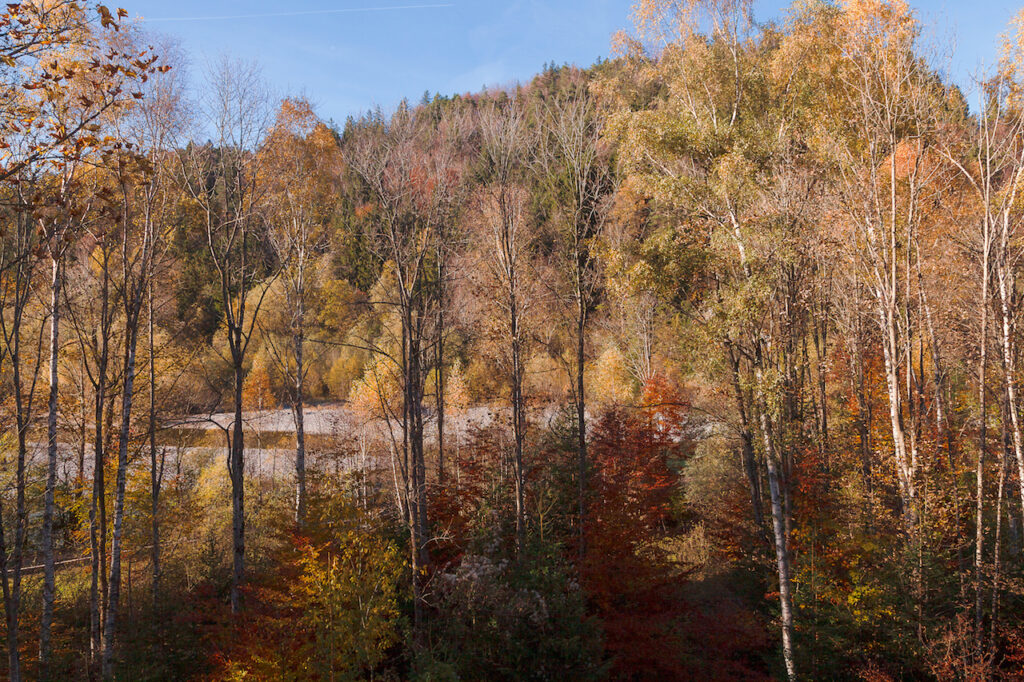
The treetop walk on the left side allows many scenic views and is an unique experience. At the highest point there is a platform above the forest.
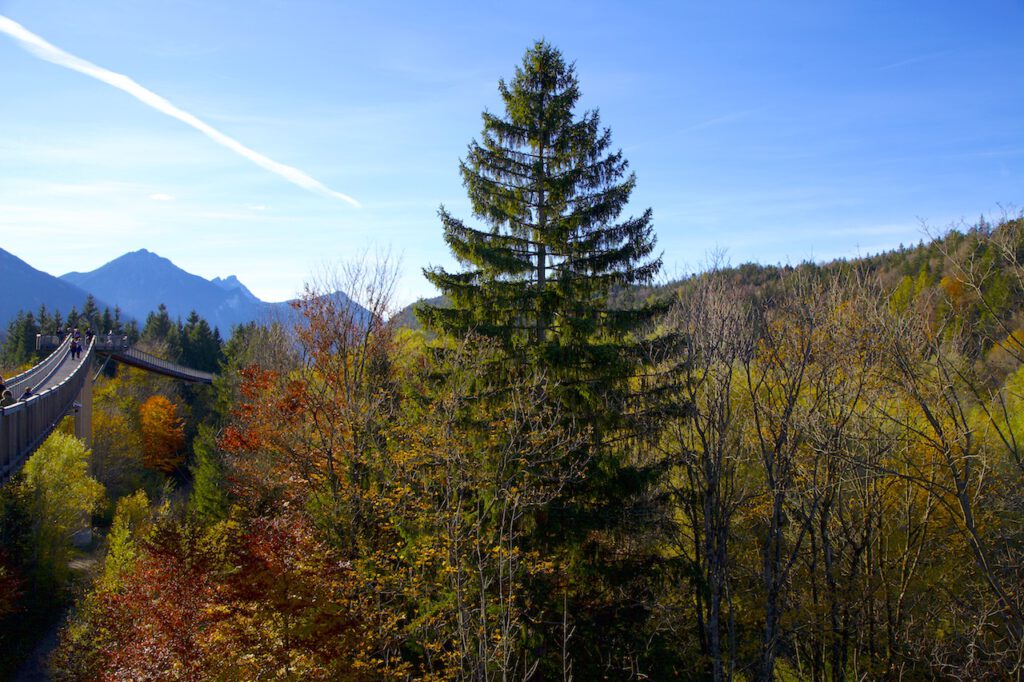
A view from the platform of the treetop walk
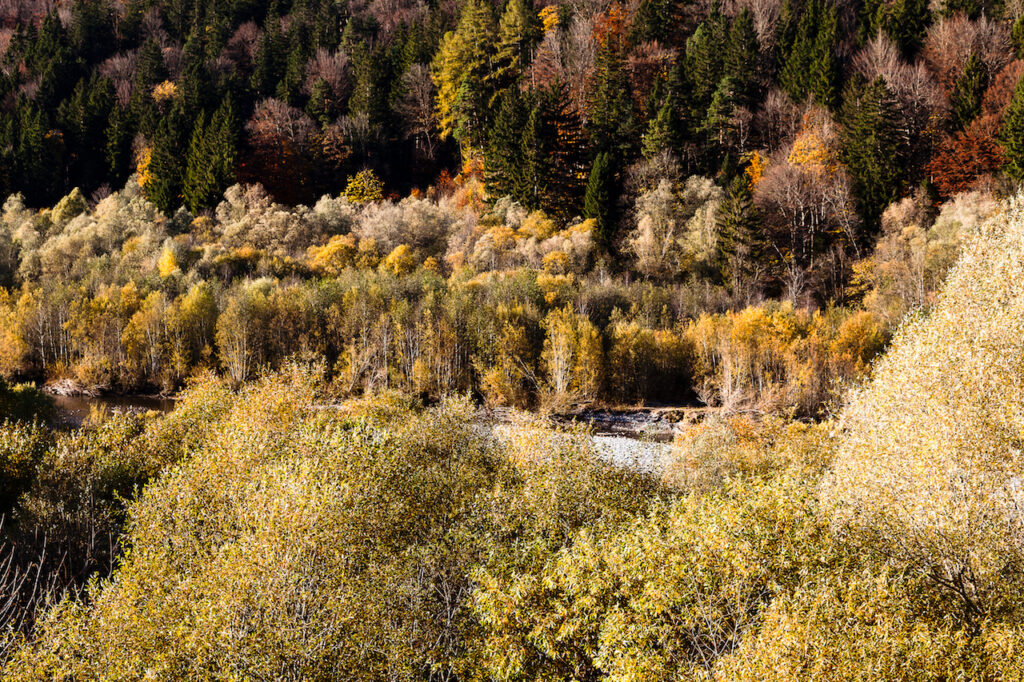
The forest on the other side of the river Lech is a healthy mixture of many different tree species. The river changes the landscape all the time. Flooding kills some trees but also creates new spaces.
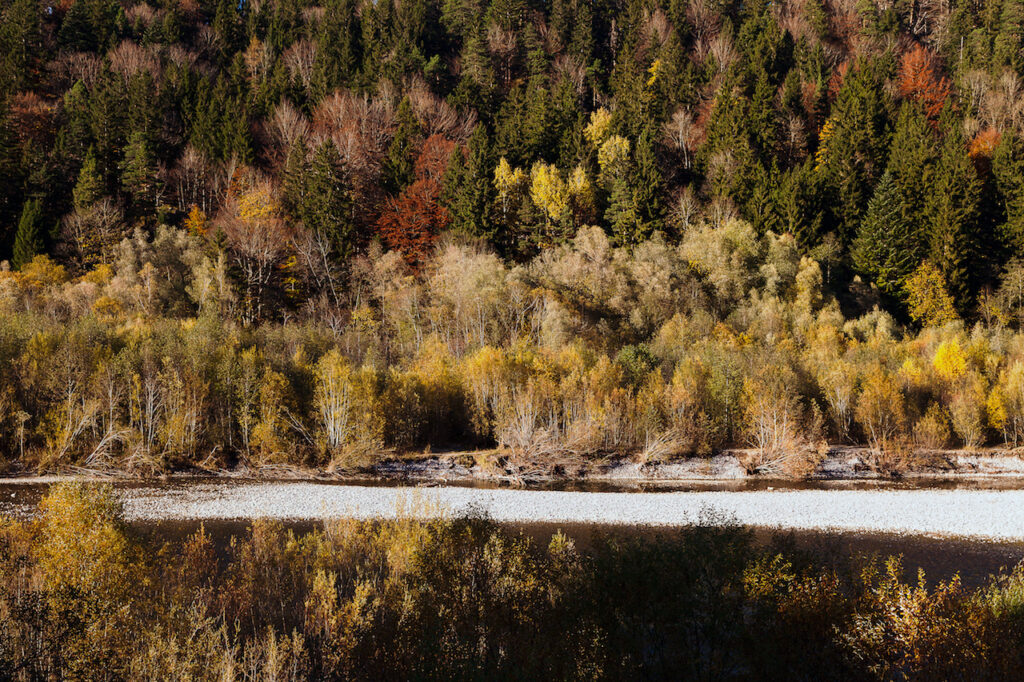
Riparian Forest with brighter colours. The wilderness near the river bank.
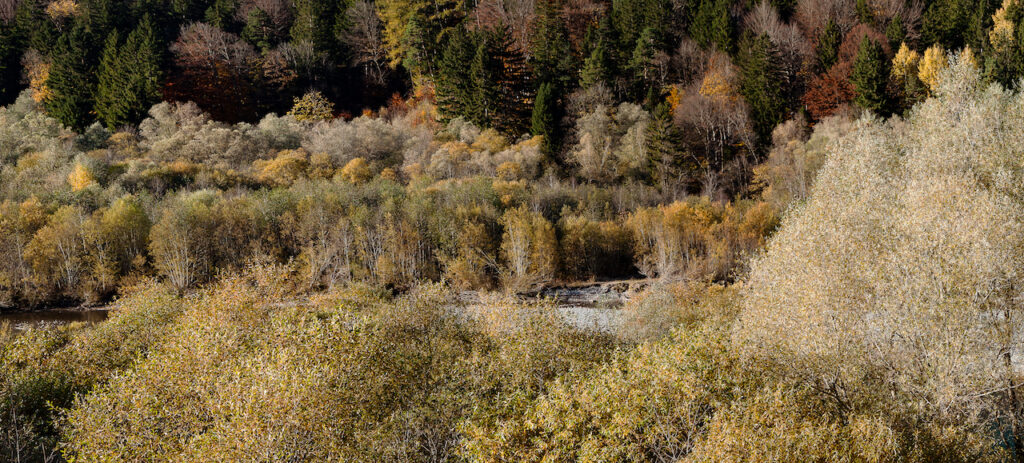
The treetop way has a length of 480 metres and a height of 21 metres. The entrance fee is 5 Euros. There is an exhibition and a playground for children. Furthermore there is riparian forest trail below. The well-known “Lechfall” is a famous photo-location and sightseeing location. There are walks to the famous Neuschwanstein Castle, the Schwansee, a geo-path and a mountain forest trail with certain stations where you can learn more about the forest and the region.